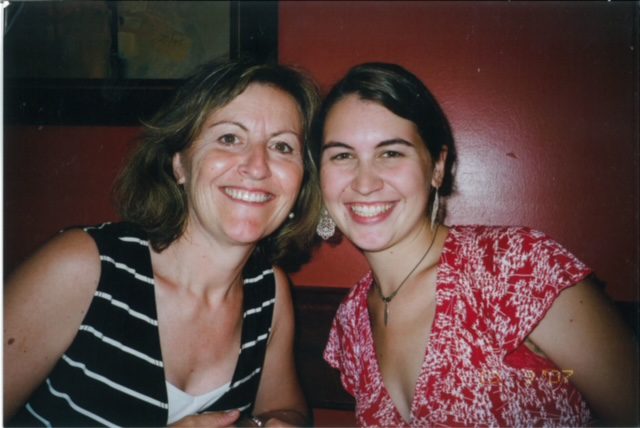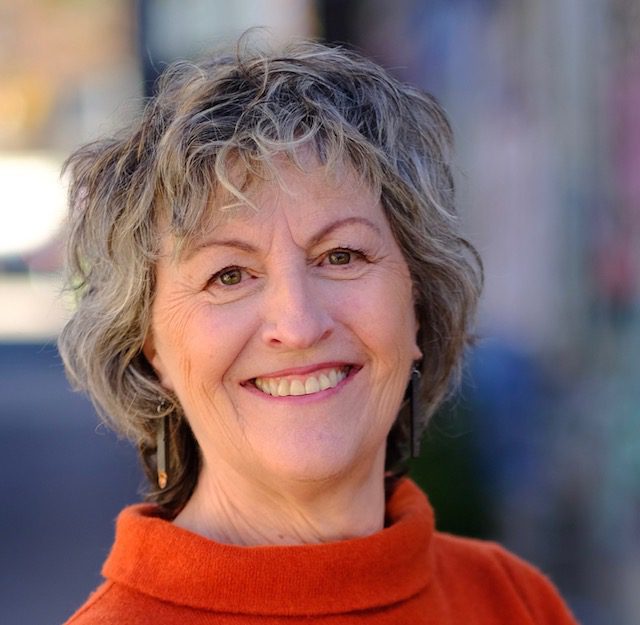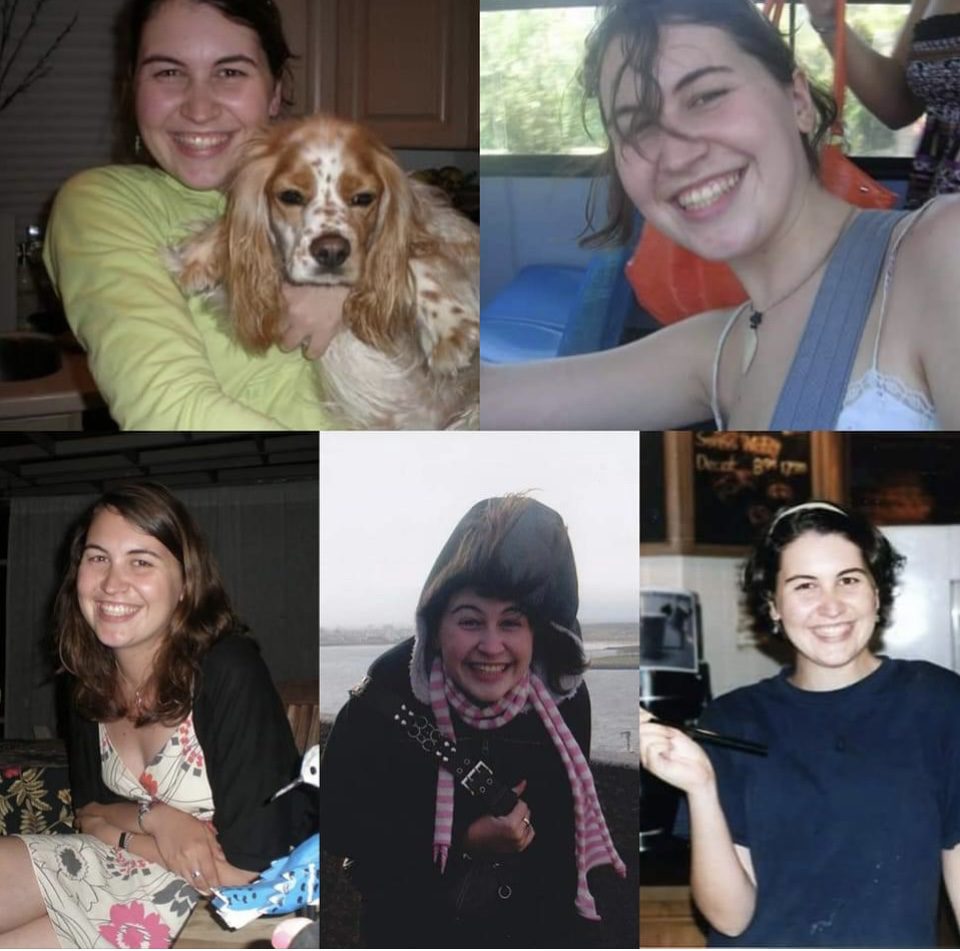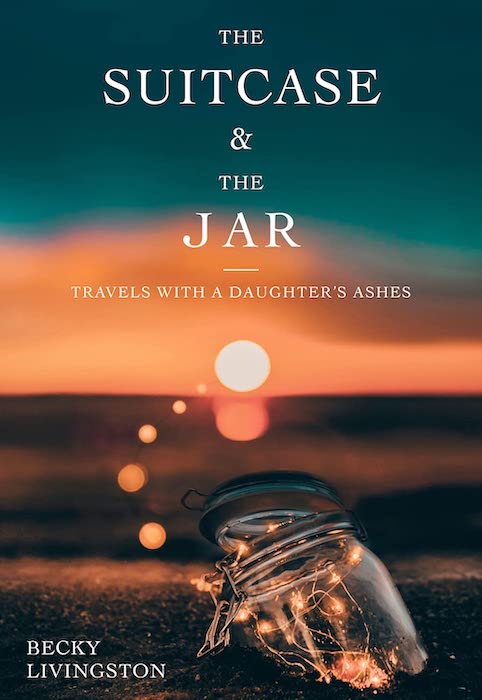Last updated on May 5th, 2024
Featured image: When the unimaginable happens, solo travel may help with the healing process / Photo credit: FTiare
Becky Livingston honours her daughter’s last wishes in “The Suitcase and the Jar”
by Carolyn Ray
Introducing our “JourneyWoman Book Corner” a new series that profiles authors from the JourneyWoman community. Have a book to suggest? You can do that here.
Sometimes, grief and solo travel go hand in hand. In “The Suitcase & the Jar: Travels With a Daughter’s Ashes”, Becky Livingston shares the story of losing her 23-year old daughter, Rachel, to a brain tumour. Rachel was a passionate traveller, and her dying wish was to keep travelling the world. A year after Rachel’s death in 2010, Livingston quit her teaching job in Vancouver, B.C., and set off on a 26-month journey to Italy, India, England, Spain, Switzerland, Ireland and North America, with her daughter’s ashes in her suitcase.
As a mother with a daughter the same age as Rachel, I was incredibly moved by this story. Not only did I weep through most of the book, I was also inspired by Livingston’s courage and bravery. But this is more than a story of grief and solo travel (a topic we’ve covered extensively on JourneyWoman) — it’s a love story that we can all relate to, as women, mothers, sisters and daughters. This is also the story of an incredibly courageous woman who chose not to listen to the naysayers and follow her heart.
“How do you pack a suitcase to hold the contents of your life?” Livingston asks in the book. “Rachel gave up everything. Now it was my turn. Her final words, ‘follow your heart’ – impossible to ignore. From that time on, I was to discover how…. Isn’t it foolish for a 53-year old woman to just abandon her job and head off overseas without a plan?”
A 26-month pilgrimage with Rachel
“What I guessed might be a year away turned out to be a 26-month pilgrimage, leaving my daughter’s ashes around the world,” Livingston says. “I honoured my daughter’s life by writing about her dying wish to keep traveling. Each time I found a new home for her I found one for myself in the timeless border connecting us.”
“It was a journey I came to think of as the journey of my life,” Livingston says. “Living with no agenda brought me back to myself. It was exactly what I had to do to keep myself alive and breathing.”
“Journeying through grief if much the same as travel in as much as we often feel groundless, and have to live with so much uncertainty,” she says. “We learn so much about ourselves and others on the road, don’t we?”
Livingston shares this heartbreaking and inspirational journey in her memoir, “The Suitcase & the Jar: Travels With a Daughter’s Ashes” which was published in 2018 and became a BC Bestseller. In the copy she sent me to read, she wrote: “for the love of daughters and of travel.” I think I teared up even before I read the first chapter.

How her solo journey changed her life
Livingston says that travel, and losing her daughter, taught her to slow down, reassess her values, and find grace in living with uncertainty.
“I live a much simpler life — quieter, and with fewer belongings,” she says. “I’ve also come to realize that it’s the people I meet in life that matter more than the places I go.”
“For me, travel is life affirming. I feel more vital and alive when I’m traveling solo than I do when I’m living at home. Plus, I’m always curious to learn how I’ve changed since the last time I went traveling. At 64, I’m finding more than ever that it’s essential I push up against my comfort zone, test my patience, my resourcefulness, and my attitude, and to discover how well (or poorly) I can surrender to the unknown.”
Solo travel wisdom
For women just starting to travel on their own, Livingston has three pieces of advice: listen more than you speak. Expect the unexpected. Most of all, be curious and ask questions. You’re a guest in another country.
She also says that we should remember that “alone” resonates with everyone. “Chance encounters are more likely, which to my mind is the highlight of traveling solo.”
Read More: Grief Journeys – Travel After Loss
What she learned about herself writing this memoir
In writing this book, Livingston says that it became a continuation of the actual 26-month journey.
“I felt a deep need to extend the physical journey into a written one,” she says. “I gained a new perspective about my own grief, and the extreme lengths required to be vulnerable on the page. Writing, grief and travel share similar traits, mostly around having to let things go.”
She has also learned to live in the present. “Sacrificing time now for time later is slippery ground. It’s ‘here and now’ where the good stuff happens.”
“By giving up my home and traveling with my daughter’s ashes I was also seeking new homes for us both. This was a revelation that only came while I was writing the book.
Livingston also learned about the power of ritual.
“The ritual of leaving her ashes rooted me and gave my life purpose,” she says. “Returning my daughter to the elements felt like a life come full circle.) It’s what helped me restore my faith in the world. Again, a discovery made only during the writing journey, not the physical journey.

“My brain is very much alive while I am sleeping. For a year, at least, I would wake up in the night with a word, or image, or memory, then turn on the bedside light, scribble it down and go straight back to sleep. The next morning this ‘scribble’ would become my entry point into the day’s writing. I found this pretty amazing.”
Livingston discovered how much she loved the rigor of writing every day on a project that was so challenging yet rewarding.
“My book, I discovered, became my primary relationship.”
What words of wisdom do you have for other women who may want to share their story?
“I think the first step is to make a commitment,” she says. “Is sharing your story something you feel you ‘should’ do, or rather that you ‘must’? One is obligation, the other is all lit up and full of energy. You’ll need it to keep that fire burning year-round.”
Livingston recommends leaving home for a while so that you have a clear space for thoughts to emerge, away from familiar surroundings.
“A writing teacher once said that if you have a story which you think might help just one person, then you have a responsibility to share that story,” she says. “Take writing classes and courses, read extensively in the genre you plan to write in, and if possible, find a respected mentor to give you constructive feedback and help you stay the course.”
When I last heard from Livingston, she was in France, studying French. Seems like she’s still on the move. If you’d like to connect with her, visit her website here.

More on Healing and Solo Travel
How Travel Changes Us: From Grieving Widow to Cheetah Crusader in Kenya
When Michele McCarthy was widowed, she turned to solo travel as a way to reinvent herself as a cheetah crusader in Kenya.
7 Tips to Take the First Step into Solo Travel After Loss
Women travellers and experts offer tips and wisdom on taking the first shaky step into solo travel after loss.
Travel After Loss: From a Disaster Trip to Solo Bliss
After a disastrous first post-loss trip with a fellow widow, a solo traveller learns that the only way to get what she wants out of travel is to go solo.








I’m so sorry about your daughter, Becky x